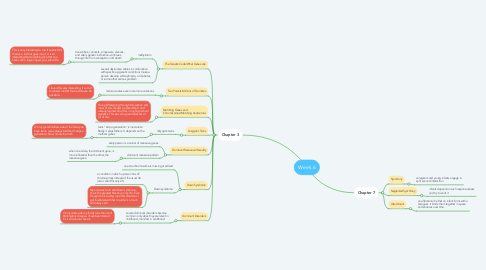
1. Chapter 3
1.1. The Genetic Code/What Genes Are
1.1.1. methylation
1.1.1.1. transcribes, connects, empowers, silences, and alters genetic instruction--continues through life from conception until death
1.1.1.1.1. This is very interesting to me. It seems that there is a lot that goes into it. It is so interesting that something like that can have such a large impact your entire life.
1.1.2. several destructive alleles in combination with specific epigenetic conditions make a person develop schizophrenia, or diabetes, or some other serious problem
1.2. Two Parents Millions of Gametes
1.2.1. nurture creates even more more variations
1.2.1.1. I found this very interesting. It sort of surprised me that that could even be possible.
1.3. Matching Genes and Chromosomes/Matching Auotsomes
1.3.1. Going After going through this section and most of this chapter I realized that I had already learned all of this in my high school genetics. This was all a great refresher of all of this.
1.4. Dizygotic Twins
1.4.1. dizygotic twins
1.4.1.1. twins "skip a generation" is inaccurate. Really it skips fathers. It depends on the mothers genes
1.4.1.1.1. On my grandmothers side of the family we have twins. I was always told that it skips a generation. Now I know the truth.
1.5. Dominant Recessive Heredity
1.5.1. every person is a carrier of recessive genes
1.5.2. dominant recessive pattern
1.5.2.1. when one allele, the dominant gene, is more influential than the other, the recessive gene
1.6. Down Syndrome
1.6.1. an extra chromosome is missing or added
1.6.2. Down syndrome
1.6.2.1. a condition in which a person has 47 chromosomes instead of the usual 46 (also called Trisomy 21)
1.6.2.2. My aunt was born with Down syndrome, she is the greatest blessing in my life. Even though she is testing me and sometimes I get frustrated with her I love her so much and always will.
1.7. Dominant Disorders
1.7.1. severe dominant disorders become common only when they are latent in childhood, manifest in adulthood
1.7.1.1. On my dads side my family runs the risk of Huntingtons disease. I have been tested for it and do not have it.
2. Chapter 7
2.1. Synchrony
2.1.1. caregivers and young infants engage in split second interaction
2.2. Neglected Synchrony
2.2.1. infants depend on such responsiveness and try to elicit it
2.3. Attachment
2.3.1. an affectional tie that an infant forms with a caregiver. It binds them together in space and endures over time

